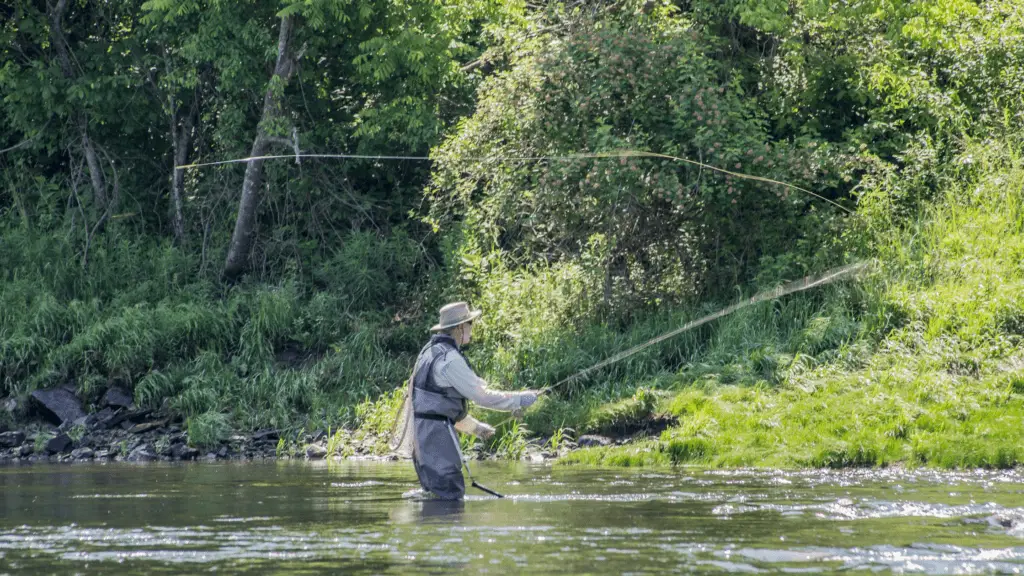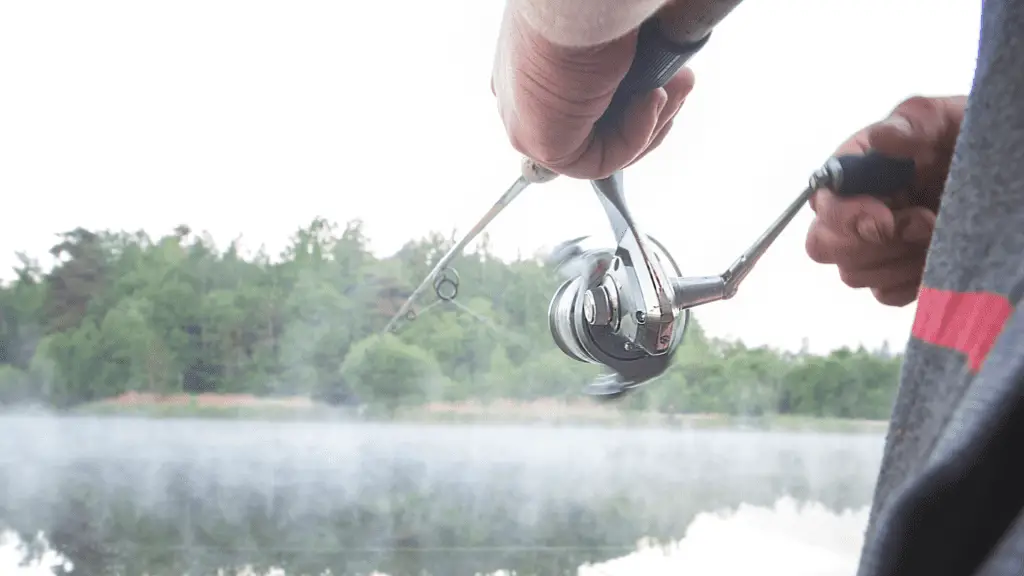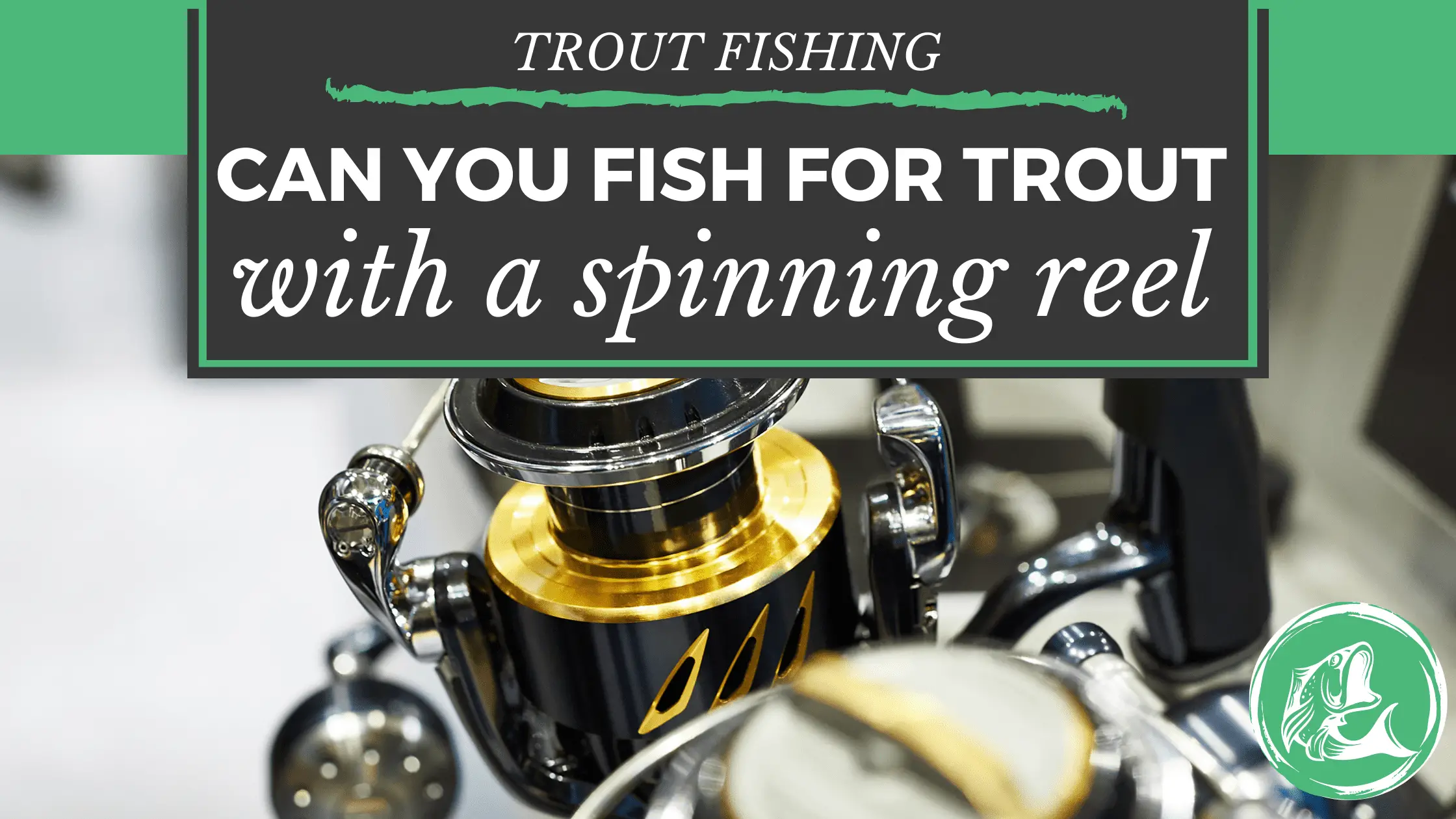Fishing for trout is a skill passed down from generation to generation. Most experienced anglers recommend different lures to keep trout interested, while some like to experiment with something new.
Perhaps one of the methods that are not in discussion is “Can you fish trout using a spinning reel?” The answer is a definitive yes. Many agree that trout fishing has to be done with traditional fly rods. However, some believe that reel fishing gets the best results.
You can use a regular rod or a reel to catch trout. Anglers use fly fishing techniques and spin fishing methods, but other techniques yield better results. Considering the type of reel to use to catch trout is just one thing. You must also note the weather, water temperature, cloud cover, and the season of the year for success.
Trout fishing enthusiasts carry a tackle box where they keep their precious baits and lures. This game fish is available all year long, but it’s during springtime when trout bite picks up.
Take advantage of this season by using the right reel & rod, line, bait, and lures. Read on for these handy tips.

Can You Use a Spinning Reel to Fish Trout?
Can you catch a trout with a spinning reel, or do you need a regular line or a specialized one? Trout are versatile fish, and catching one is possible using a regular line or a spinning reel. There are two options to consider: you can capture one using fly fishing techniques or through spin fishing.
Traditions fly fishing lines come with a standard fly rod with a monofilament line. Also, a single strand fishing line that’s buoyant and can stretch even under heavy loads. You can fish for trout with a traditional fly fishing line using standard baits and lures.
However, when catching larger trout or fishing in high currents, you need a rod equipped with a spinning reel. Here are reasons why spinning reels are far superior to standard rods when catching trout:
- Spinning reel designs – standard spinning reels have an open-face design with a drag adjustment switch on top. Inside the reel is a metal bail that locks the line to prevent this from getting loose.
- Spinning reel features – attach spinning reels to the bottom part of the rod and thus, make it more natural to use. It feels more balanced, especially when you’re casting.
- Easy to cast – Also, casting with a spinning reel is easier than traditional fly fishing and other reel-type rod designs such as bait casters. Disengage the bail. Squeeze its line from the rod using your fingers to prevent the reel from getting loose.
Swing the rod to the side or overhead and release your finger as you do this. Aim the rod to where you want the line to land.
Spinning reels work great with all kinds of baits and lures. Furthermore, you can also catch many different species of game fish with a spinning rod and reel.
Combine spinning reels with braided line, and you can pull large game fish with ease. You can also achieve larger distanced casts, especially with the pricier spinning reels.
There are many advantages of using a spinning reel, but it’s not always a good idea. It would help if you are an experienced angler handling a spinning reel as you can easily tangle the line. You’ll be leaving with tangles and twists if you’re not careful. Also, limit yourself from using lighter lines and lures. Heavy ones can affect the spinner reel’s performance.
How to Use a Spinning Reel to Fish Trout?
Spinning reels are easy to cast. First, start by placing the rod with your dominant hand. Second, the arm of the reel from your index finger and ring finger. Lastly, use your index finger to pinch the line and flip the spinning reel bail open.
Your opposite hand should be on the end of the rod. Lift it over your shoulders to place it perpendicularly from your body.
Now, swing it forward using a 180-degree rotation. As the rod rotates, release the pinched line around 130 degrees. As soon as the line is cast, close the bail using your other hand. You may reel the lure forward to retrieve it.

What Are Other Ways to Fish Trout?
Trout are very versatile fish that can be captured using many other types of rods and reels. Here are other ways to do it.
- Fly rods – this is a lightweight rod that works by false casting.
- Fly lines – this kind of line is also lightweight and is perfect for casting flies used for fly fishing for trout.
- Monofilament line – this kind of line can take heavier lures that don’t need a massive line.
Anglers vouch for these trout fishing methods, but it boils down to what is easier or more efficient for you. If you’re going to a lake to fish for trout, a spinning reel works best. If you’re on a river, fly fishing is a good choice. You won’t know which one works best if you don’t try both out.

Tips For Trout Fishing With Spinning Reels
Indeed, you can catch trout with a standard fly line or a spinning reel. However, there are also ways to make things more efficient. Here’s a list of a few spin rod fishing tips to get you by.
A Lighter Line is Better
Use a 4-pound monofilament or 6-pound fluorocarbon line instead of a heavy line. This line is difficult to see, and because of its fine cross-section, it can cut through the water surface. You can fish trout in deeper waters with a lighter line.
Go Beyond Common Fishing Areas
Trout may hide in areas where anglers won’t dare look. Get away from the crowd, hike longer and farther or wade deeper to find that perfect spot. Usually, larger and healthier trout hide underneath logs, roots, and holes.
Lure them Upstream
Trout can see their surroundings at wider angles than humans, which is why these fish face upstream towards the current. So move low, approach the fish from several feet to get accurate results.
Trout Love Small Bait
Trout are smart and sharp-eyed and can quickly see through your artificial baits and lures. Expert anglers recommend small lures like a small worm, pea-sized cheese, or other minute insects. It’s best to use a 1/16 – ounce spinner rather than a ¼-ounce one. It would also be better to use a smaller hook like a number 12 instead of a number 14.
Use a Strike Indicator
A strike indicator signals you when there is a small disturbance on your lure. It helps you prepare for your attack earlier and see if you’re dealing with large or small fish.
Use Crankbaits and Jigs
Usually, jigs and crankbaits are for bass fishing. When you use smaller baits, you’re able to use these for trout. Smaller crankbaits are also common in trout fishing, and manufacturers are now coming up with micro versions.
Use Fresh Bait
Trout and other game fish love to eat live and energetic bait. Don’t use dried-up bait or sluggish ones as these won’t make trout interested at all. If you want the best results, use worms placed in moss-lined containers. Professional fishermen also use aerated buckets to keep their bait fresh.
Use Varying Types of Bait
Like all other game fish; trout have varying dietary preferences. This fish will eat anything that interests them, but sometimes it’s best to use various baits and lures. Wild trout may eat anything that moves, shines, or glides across the water. Unusual baits like cheese, corn kernels, putty baits, etc. are for coughing stocked trout.
Stock up on different baits as you head off your fishing spot. Load your tackle box with salmon eggs, minnows, cheese balls, cheese, flies, and other bugs. Remember, fresh live bait is always better than sluggish or frozen ones.
Consider Weather, Water Temperature, and Cloud cover
Trout are abundant during warm weather conditions and cooler water temperatures. Check the weather before you head off to your fishing spot. A day with good cloud cover is best as trout often hide or go to deep water when the sun is too bright.
Bring a water thermometer or use your personal preference. If you think that the air or water is too warm, wait until it is cooler to fish for trout. If it’s too chilly out, it’s not a good day for a good catch.
The magic moment to catch trout is the time before dawn and dusk. This is when trout are actively feeding on insects, worms, and anything that moves. When you’re in the water, and it rains, don’t pack your gear yet. Wait until it stops as trout usually come out to feed after a shower.
Ready to Fish Trout with Spinning Reels?
Now that you know you can catch trout with a spinning reel, put it to the test. Additionally, you can catch trout no matter what type of reel you use. It’s best to invest in high-quality spinning reels such as the Shimano Sedona 3000 or Daiwa Legalis LT to ensure great success in any water.


